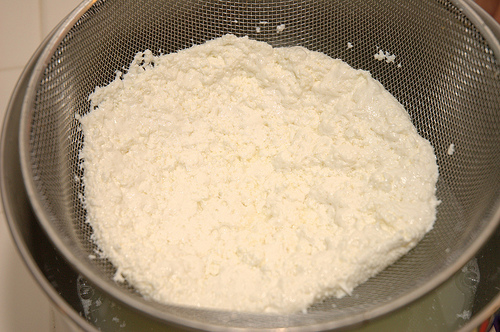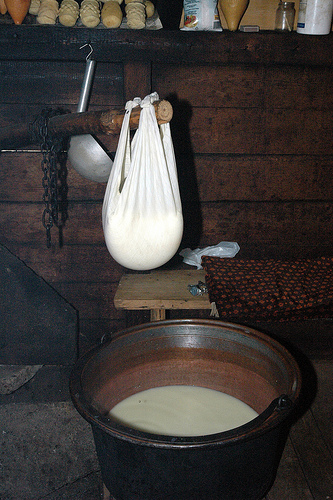At first glance, it looks like a bit of cauliflower. It is, in fact, a mixture of bacteria and yeasts — a fungus, of sorts. Kefir grains, used to make what Poles call “kefir,” what Russians refer to as “кефир” (pronounced the same) and what we call, essentially, buttermilk.
Production is simple: take the kefir grains, wrap them in gauze, drop them in a ceramic container, cover them with fresh milk, and let the mixture sit overnight. In twenty-four hours, you’ll have a chunky, lightly acidic buttermilk, that, an added medicinal bonus, has a slight alcohol content.
From there, it’s just a moment’s heating away from farmer’s cheese: mix the buttermilk with some fresh milk, heat, and strain.
In Poland, they do the same essential process with sheep milk, eventually forming it into oblong cheese blocks and curing them in a smoke house.


